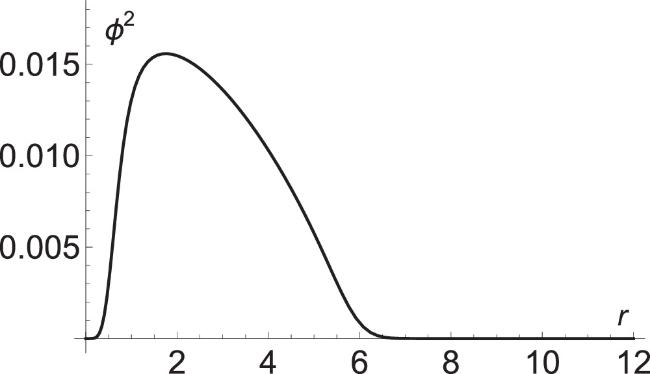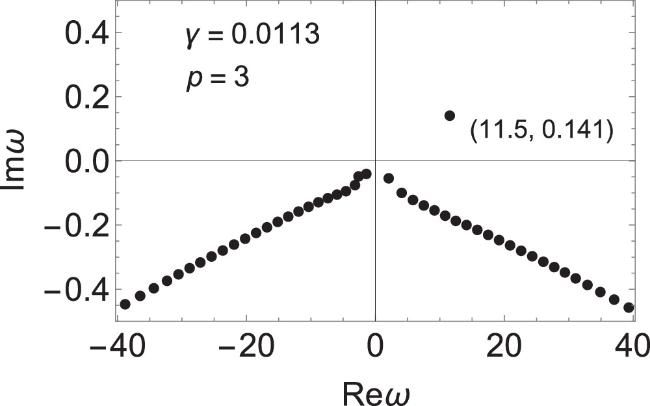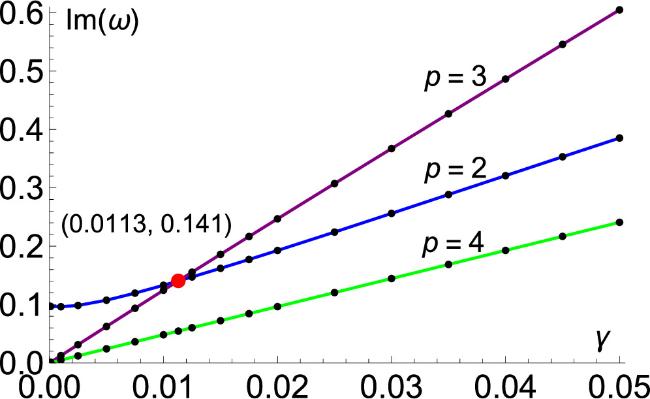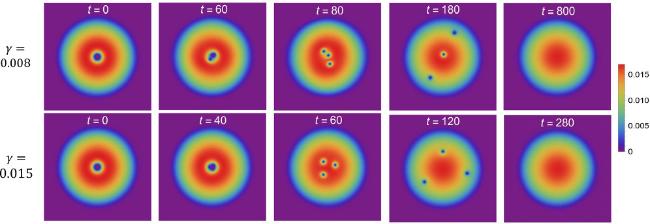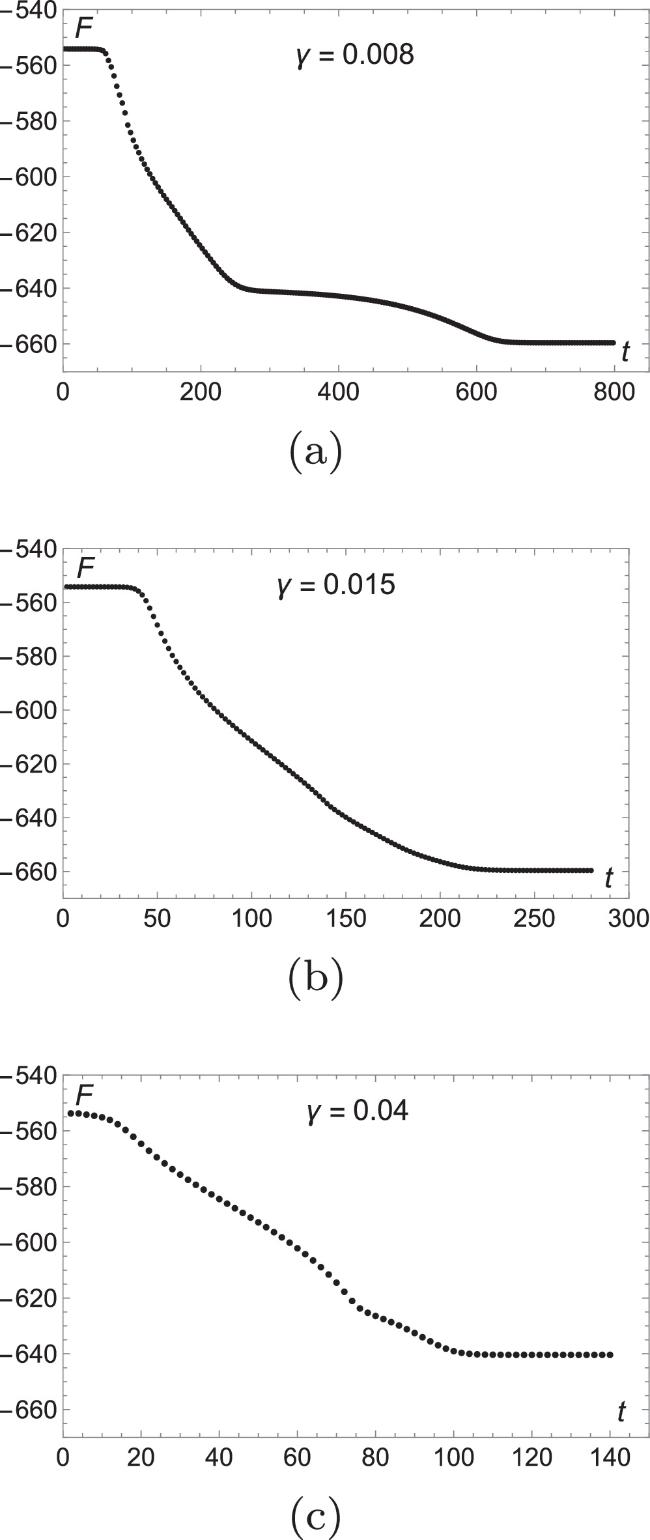Techniques for generating quantized vortices with a high winding number in gaseous BECs include topological phase [
42–
44], the use of Laguerre–Gaussian beams [
45] and spiraling laser beams around an obstacle [
46]. Multiply quantized vortices have been created in the laboratory with winding numbers as high as 11 [
46]. Of particular interest are triply quantized (
n = 3) vortices [
1,
6,
7,
12,
13,
16,
18,
24,
31,
32,
41], the dynamics of which are neither as trivial as those of doubly quantized (
n = 2) vortices nor as complex as those of multiply quantized (
n ≥ 4) vortices. The
n = 3 vortices are prone to instabilities that result in a split with
p = 2-, 3- or 4-fold rotational symmetries, corresponding to three distinct splitting patterns. According to the theoretical argument of energy and angular momentum [
7,
13], the configuration of the
p = 2 splitting pattern consists of three
n = 1 vortices in a linear arrangement, whereas the
p = 3 splitting pattern forms a triangular configuration of
n = 1 vortices while the
p = 4 splitting pattern features four
n = 1 vortices orbiting a central
n = −1 vortex. These splitting dynamics of
n = 3 quantized vortices are numerically simulated using the zero temperature Gross–Pitaevskii equation (GPE). Only the
p = 2 splitting pattern was observed in [
16,
32] under random perturbations, while the
p = 3 and
p = 4 splitting patterns were observed in [
24] for specific chemical potentials and confinement potentials. A subsequent question that arises is: what governs the specific splitting pattern of the triply quantized vortices? It is important to acknowledge that the influence of finite temperature, originating from the surrounding environment acting as a thermal bath, is inevitable. The splitting patterns and dynamical transitions of quadruply quantized vortices at finite temperature were investigated in [
22] by holographic duality. Interestingly, the splitting patterns were found to be determined by temperature. With increasing temperature the splitting pattern changes, transitioning from the
p = 2 mode to the
p = 3 mode, and subsequently from the
p = 3 mode to the
p = 4 mode. Inspired by this work, we utilize the dissipative GPE and explore the impact of finite temperature on the splitting dynamics of triply quantized vortices within oblate-shaped BECs, which are effectively considered as two-dimensional systems.




